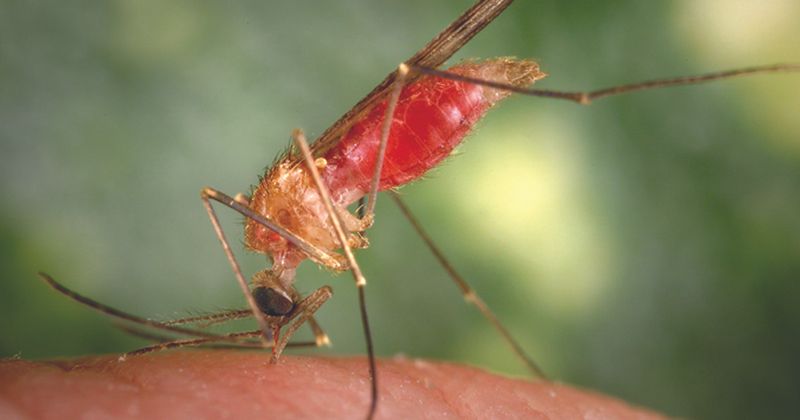Data confirm vaccine-drug combo ‘drastically’ reduces malaria
Key takeaways:
- Combining seasonal vaccination and malaria chemoprevention reduces hospitalization and death from malaria by roughly two-thirds.
- WHO is set to start distributing the vaccine in 12 sub-Saharan African countries later this year.
Combining seasonal vaccination and chemoprevention reduces the incidence of malaria by around two-thirds compared with either prevention method by itself, updated study results confirmed.
The study was conducted in Burkina Faso and Mali starting in 2017. Three-year results were published 2 years ago, showing a “remarkable” reduction in malaria from combining the vaccine, called RTS,S/AS01E, with antimalarial drugs each season. Updated 5-year results were published this week on The Lancet Infectious Diseases, demonstrating similar results.

Adding treated bed nets to the two interventions “likely” raised the level of protection against malaria to greater than 90%, according to Sir Brian Greenwood, CBE, FRS, FMedSci, professor of clinical tropical medicine at London School of Hygiene & Tropical Medicine.
In 2021, RTS,S became the first malaria vaccine ever recommended by WHO for children in sub-Saharan Africa and other countries affected by the mosquito-borne disease.
In July of this year, WHO announced it would allocate 18 million doses of the vaccine to 12 African countries between 2023 and 2025, and that it expects production of the vaccine to ramp up significantly in 2026.

According to Greenwood, one of the weaknesses of the vaccine is that it provides protection for only a few months. This led researchers to treat it like an influenza vaccine, giving it to children once a year right before the rainy season, in addition to antimalarials and distributing mosquito-repellent treated nets, he said.
“The rationale behind this study would be to give both together, because neither of them is perfect — the vaccine’s not perfect, the drug’s not perfect — so let’s give them together,” Greenwood told Healio. “We showed that when you do that, you really do get very good protection and you can do that for 5 years.”
The double-blind, individually randomized, controlled, non-inferiority and superiority phase 3 trial recruited and re-enrolled 5,433 children in Burkina Faso and Mali in April 2020 who had been enrolled in and completed an initial 3-year trial when they were aged 5 to 17 months old.
Over 5 years, the incidence of clinical malaria per 1,000 person-years at risk was 313 in the group of children receiving only seasonal malaria chemoprevention (SMC), 320 in the group receiving only the RTS,S vaccine, and 133 among participants who both, according to the study.
The researchers reported that the 5-year study results were similar to those in the study’s first 3 years — protective efficacy of the combination after 5 years was 57.5% vs. SMC alone and 59% vs. RTS,S alone compared with 62.8% and 59.6%, respectively, in the first 3 years.
Additionally, the vaccine-drug combination was linked to decreases in hospital admissions for WHO-defined severe malaria by 66.8%, malarial anemia by 65.9%, blood transfusions by 68.1% and malaria deaths by 66.8%.
“Our study showed that administering the RTS,S vaccine seasonally every year reduces the burden of malaria drastically in children under the age of 5, who are the most affected by this disease,” Alassane Dicko, MD, a professor at the Malaria Research and Training Center, said in a press release. “Rapid implementation of this new additional tool is needed to reduce the huge burden of malaria on children in our countries.”
A second malaria has also shown promise in studies that found it was 77% efficacious among children after three doses and up to 80% efficacious among children given a booster after initial vaccination.
“It’s real progress. I’m coming to the end of my career, and I’ve been thinking about malaria vaccines — it’s so important — for 30, 40 years and people have been working on this. It really has been a real struggle,” Greenwood said.
As the RTS,S vaccine is rolled out over the next few years, there will be more studies on how best to use the vaccines, because they are “not perfect,” Greenwood said.
“At least we have something,” he said. “We have a malaria vaccine that will have some effect. We just have to learn how to use it in the most effective way.”
References:
- Dicko A, et al. Lancet Infect Dis. 2023;doi:10.1016/S1473-3099(23)00368-7
- Dramatic reductions in malaria cases and deaths continue over five years with seasonal malaria vaccine-drug combination. https://www.malariavaccine.org/news-events/news/dramatic-reductions-malaria-cases-and-deaths-continue-over-five-years-seasonal. Accessed August 24, 2023.
- UNICEF. Malaria vaccine: Questions and answers on vaccine supply, price and market shaping update. https://www.unicef.org/supply/media/15726/file/Malaria-Vaccine-Questions-and-Answers-on-Supply-Price-and-Market-Shaping-February-2023.pdf. Published Feb. 2023. Accessed August 24, 2023.

